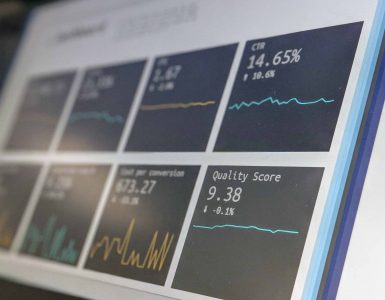Digital transformation necessarily means changes in the IT infrastructure. It’s about bringing a new wind to an entire Information Technology (IT) system to optimize the operations and processes of a given company. Remember that IT infrastructure deals with the flow of information within the enterprise, including everything from data collection to storage and use. Its robustness is therefore essential to the smooth running of a digital transformation, and this goes hand in hand with all its components. Before going into more detail about the steps to follow to have a good infrastructure, let’s see what it all means first.
What is an IT infrastructure?
An IT infrastructure or IT infrastructure encompasses all the components essential to the operation and management of a company’s IT environments.
It includes :
- hardware, software and network elements;
- an operating system;
- a data storage system.
Elements of an IT infrastructure
Hardware
- Servers, data centers, computers, routers, switches and other equipment.
- The facilities that house, cool and power data centers.
Software
- The applications used by the company: web servers, content management systems and operating system.
Network
- The set of equipment linked together to transmit and receive information. We can find Internet connection, network compatibility, firewall and security, as well as equipment such as routers, switches and cables.
Read also: Now is the time to update your technologies
Types of IT infrastructure
- Conventional infrastructure
Its components (data center, data storage system and other equipment) belong to the company that manages them itself. This type of infrastructure is known to be expensive since it requires a multitude of hardware equipment that needs to be powered and hosted.
- Cloud infrastructure
“Cloud computing is the distribution of various services via the Internet. These include tools and applications such as data storage, servers, databases, networks and software. Rather than keeping files on a proprietary hard drive or local storage device, cloud storage allows files to be stored in a remote database. As long as an electronic device has access to the Internet, it has access to the data and the software to run it”. (Investopedia).
This infrastructure brings together all the elements and resources needed for Cloud computing. The company can create a “private cloud” using its own resources or use a “public cloud” by renting a cloud infrastructure from a provider, such as Microsoft, Amazon, Google, etc. The cloud infrastructure can also be rented from a third party.
- Hyper-converged infrastructure
Allows you to manage computing, network and data storage resources from a single interface. By combining software-defined storage and computing resources, the enterprise can run more modern workloads with infrastructures that can evolve on standard hardware.
Now that we have a better understanding of what an IT infrastructure is, what are the different steps to take to optimize yours?
Step 1: A robust infrastructure
IT infrastructure, if poorly managed, can very quickly become an inhibitor to digital transformation. Digitizing without being prepared can open the door to many loopholes. Among them, security problems, unreliable network, poorly managed storage, etc. To avoid any concerns that could impact a company’s finances and IT system, simply focus on three aspects that are essential to a good IT infrastructure:
- Storage
Data storage is very important for the business development of a company. It is then essential to opt for a storage capacity of very good quality. This makes it easier to ensure that the information they contain can be used in a way that is beneficial to the company.
- Network
If the company opts for a cloud infrastructure, the network must be extremely reliable to avoid any failure that could cause significant financial losses.
- Processing
In order to process all the data that will be used by the company, it must be equipped with a powerful operating system. It is essential that the big machine that carries all this little computer world, is robust enough so that nothing stops.

Today we find these three elements of the IT infrastructure in the type known as hyperconvergent. This trend, which is increasingly used, has recently incorporated extended virtualization, allowing companies to move from a traditional infrastructure to a software-defined infrastructure.
Step 2: A secure infrastructure
In today’s world, no matter how big or small a company is, it is very difficult for it to escape the risks of cyber attacks. Hackers have the expertise and tools to dismantle IT infrastructures from the smallest to the largest company.
One of the most significant events of the last two years has been the impressive explosion of malware, all malicious software developed to harm computer systems without the consent of their owners. The most common threats today are “cryptovirus ransomwares“. The purpose of this malware is to take the private data of an individual or company hostage. This represents a rather important cost and has a negative impact on the image of the victim companies.
It is therefore essential to protect your computer system and data reliably and efficiently. Here are 5 key steps to consider according to a study conducted by Deloitte :
- Focus on what matters: your attractive assets and relationships.
- Proactively assess cyber risk
- Emphasize awareness to build multi-level advocacy
- Strengthen your organization’s protections
- Prepare for the inevitable
And don’t forget to stay alert!
Read also: Cybersecurity in Industry 4.0 era
When an organization embarks on the project of transforming itself, it is essential and even vital for it to protect its computer system and data to avoid damage to its portfolio and reputation. Finding the most appropriate protection for its structure is a very important step and one that should not be taken lightly. This decision will have an impact on the present, but also on the future of the company.
Step 3: The Big Data
Big Data”: Technological area dedicated to the analysis of very large volumes of computer data (petabytes). These are derived from a wide variety of sources, such as search engines and social networks; these large volumes of data. (Larousse)
Every company uses data differently, but the more efficient it is, the greater the potential for growth. Makes sense! An optimal data analysis will therefore help to find answers that will help to generate :
- Cost reduction :
Big Data can make a company want to change internal processes. The information generated can help reduce production, packaging and maintenance costs during manufacturing. In addition, it could also reduce transportation and inventory costs, resulting in significant savings.
- Increasing efficiency :
Some specialized Big Data analysis tools can provide immediate analysis and help executives make quick decisions. These same analyses can be used to improve the speed of production. It also allows managers to distinguish between processes and products to target the necessary adjustments.
- The enrichment of employees’ tasks :
Time saving analysis frees employees to focus on value-added tasks. In addition, the synergistic flow of information across management, engineering, quality control, mechanical operators and other aspects of the organization allows these different departments to work together more efficiently. Some employees even consider that the arrival of Big Data makes their work much less repetitive and therefore more stimulating.
Lire aussi : Big Date profile in Québec by Montreal International
- The improvement of the link with the customer :
The Big Data can also extract invaluable information about your customers. By knowing how consumers buy and how satisfied they are with their purchases, you can not only tailor products to their specific needs, but also conduct targeted marketing campaigns. This can lead to an eventual increase in revenues.
- Online reputation monitoring :
Analysis tools can measure feelings. It is therefore possible to obtain precise “feedback” on what the public thinks and says about a company. Therefore, we can monitor and improve your company’s online presence.
- Control of competing strategies:
Just as the analysis tools allow you to monitor customer needs and your company’s online reputation, they also allow you to quickly detect new strategies put in place by your competition.
- The improvement of quality assurance :
The use of Big Data for preventive analysis allows to significantly reduce testing time and to focus on specific tests.
- Risk reduction:
The study of the extracted data makes the detection of bad practices, anomalies and possible frauds more efficient. Appropriate measures can then be taken to minimize damage.
- Improvement of supply:
By using Big Data to forecast potential raw material delivery problems, a company can evaluate the probability of potential delays on a map, analyze weather statistics of tornadoes, earthquakes, hurricanes, etc., and then use the data to predict the potential for problems with raw material delivery. Predictive analysis can be used to calculate the probability of delays. The results can then help identify replacement suppliers and develop B plans to ensure that production is not interrupted.
Step 4: IT at the service of business
The time has come to break the stereotypes of IT experts. Yes, we continue to call them to the rescue whenever software freezes or a computer runs into trouble, but their role takes on a much broader meaning with the digital transformation.
From now on, information technology experts represent an essential resource for the smooth running and, above all, the success of the digital transformation. In addition to having in-depth knowledge of technology, they can be very good advisors regarding implementation strategies. Indeed, their expertise and experience will guide the changes in the best way, because who better than them will choose the best IT infrastructure, the most appropriate protection against cyber risks and the most optimal data structure?
Read also: What is a successful change leader?
If you’re about to embark on your digital transformation or if you’re already in the middle of it, make sure you give your IT organization enough time and energy, it’s worth it. Don’t hesitate to include your IT teams in the project and immerse yourself in all their knowledge to maximize your chances of having a solid structure, flawless cyber security and an efficient data system.








